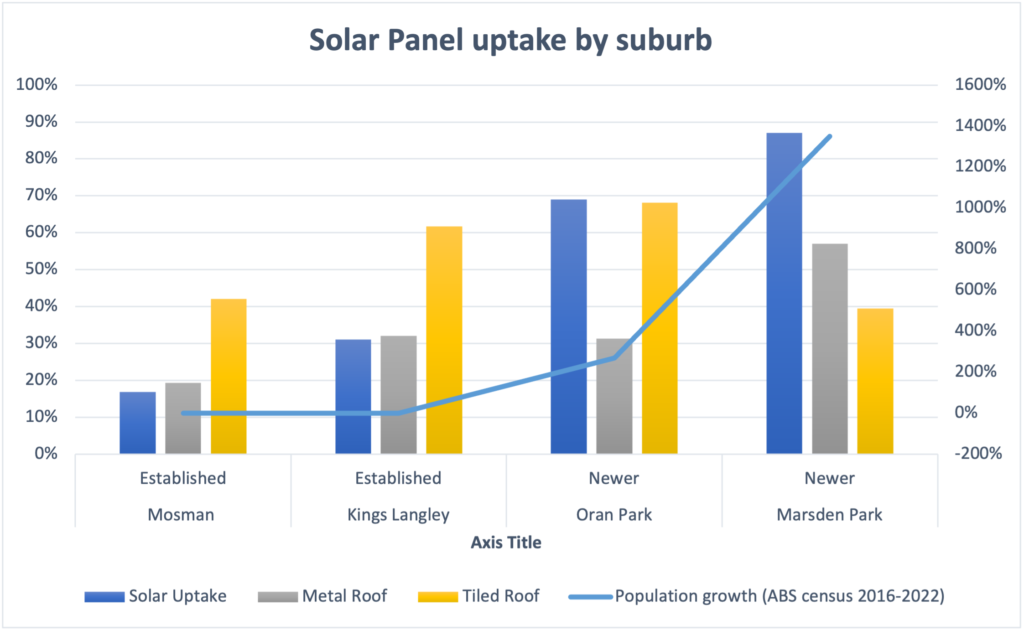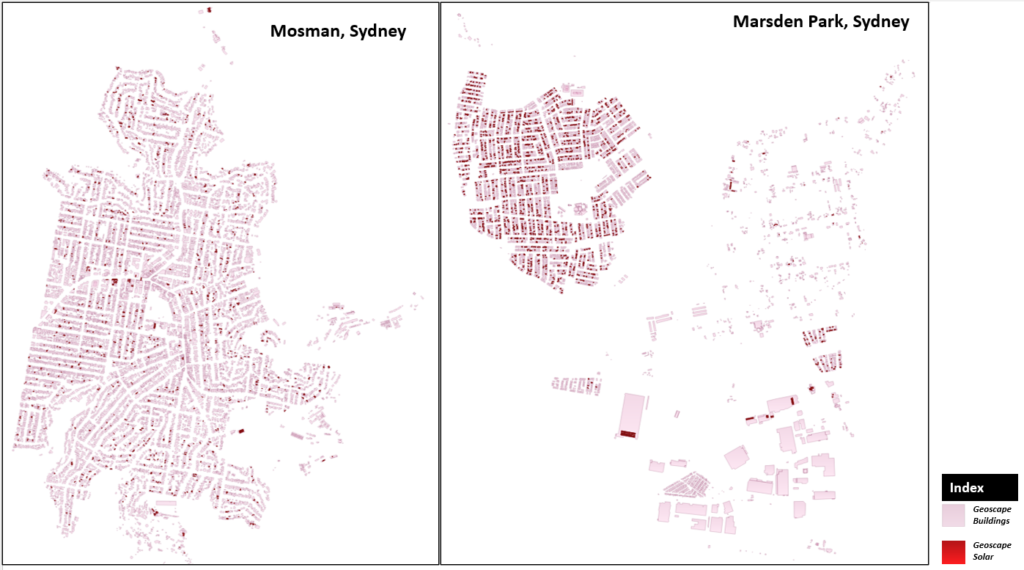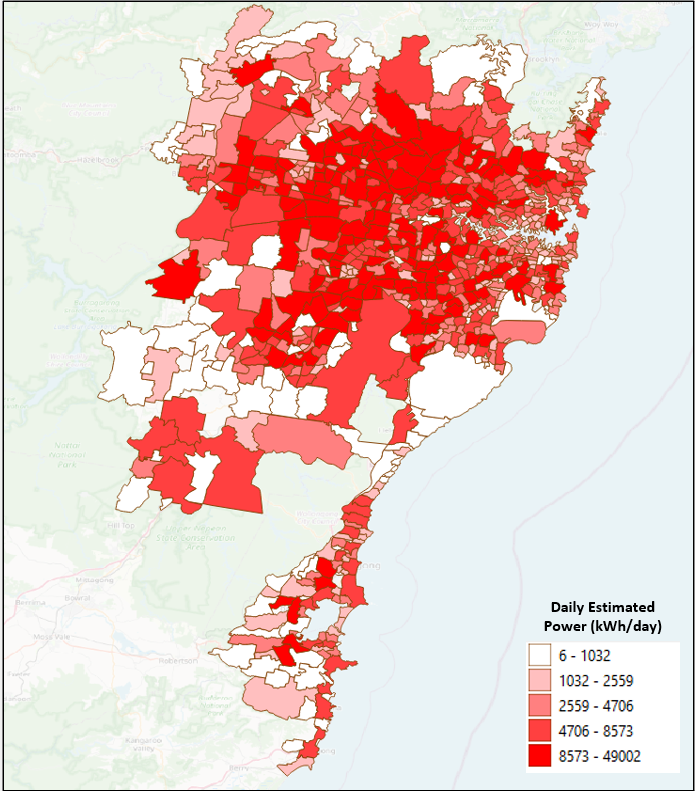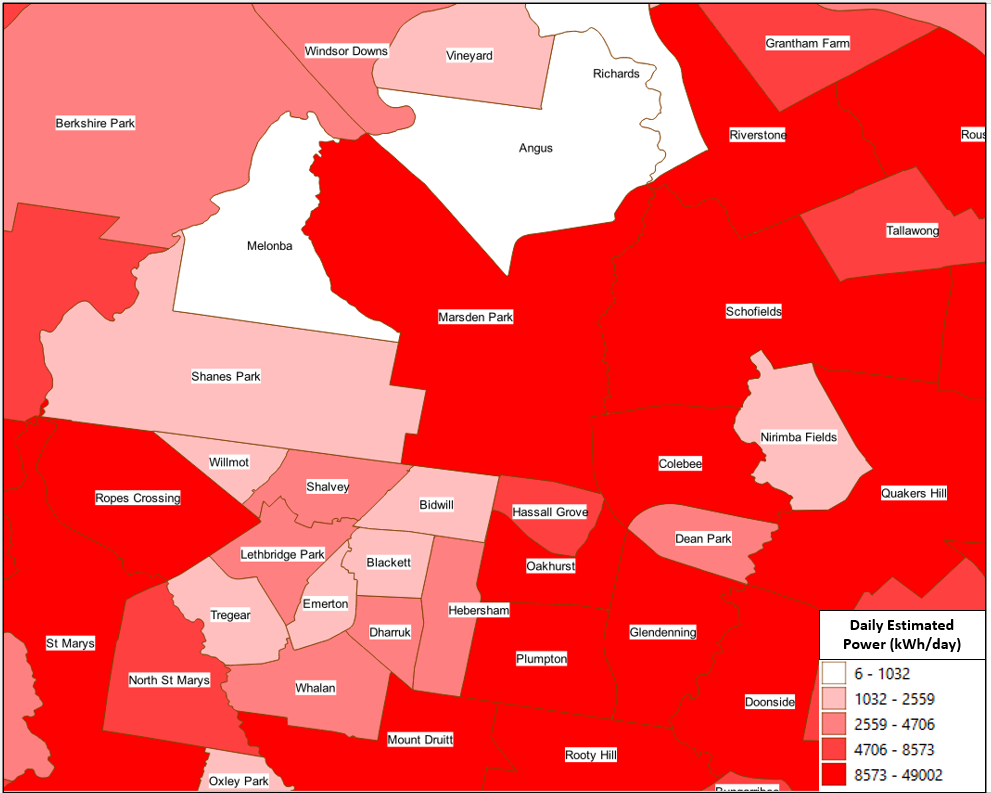A comparative analysis of Sydney suburbs with Solar Photovoltaic roof panels
Mosman, Kings Langley, Marsden Park and Oran Park
When it comes to renewable energy, Australia is known as the sunniest continent with the highest solar radiation per square meter.
Recently, more and more people are moving toward renewable energy sources not only to have reduced electricity bills but also to move towards a sustainable future. As per a recent report by the Australian Energy Council, among the different states of Australia, NSW has been leading the way, with more than 116,000 solar rooftop PV systems installed in 2021 and 965 MW of capacity added to household rooftops.
Our findings
With the recent launch of Geoscape Solar, we decided to use our data to analyze solar installations, particularly between the more established suburbs and the newer ones.
The suburbs were Mosman, Kings Langley, Marsden Park and Oran Park.
Mosman and Kings Langley are the established suburbs, and Marsden Park and Oran Park are both relatively new as Oran Park developed rapidly with a population that has grown from 0–7500 in 8 years.
Detailed analysis


| Mosman (NE Sydney) | Kings Langley (NW Sydney) | Oran Park (Sydney SW) | Marsden Park (NW Sydney) | |
| Suburb Age | Established | Established | Newer | Newer |
| Solar Uptake | 16.8% | 31% | 69% | 87% |
| % of Polycrystalline Panels (used instead of Monocrystalline and Thin-film) | 76% | 87% | 89% | 82% |
| Metal Roof | 19.37% | 32.05% | 31.27% | 57% |
| Tiled Roof | 42.09% | 61.75% | 68.17% | 39.05% |
| Other kinds of roof | Flat concrete 37% Fibreglass 1.26% | Flat concrete 5.22% Fibreglass 0.98% | Fibreglass 0.55% | Flat concrete 2.7% Fibreglass 0.4% |
| Populations growth (ABS Census 2016-2022) | -0.5% | 0.01% | 269% | 1349% |
In general, newer suburbs seem to have an increased solar uptake. It’s plausible that building/government regulations around solar uptake may be one of the factors. Though several factors can influence solar uptake, ranging from roof construction materials, building size, building height, building orientation and government policies around suburbs.
Some may believe that metal roofs are more likely to have solar uptake but Oran Park has 68% tiled roofs with high solar uptake. Marsden Park equally has a good uptake but has more metal roofing. Interesting to note that the dark metal roofs in the western suburbs of Sydney have been held responsible for contributing to the urban heat island effect, you can read our blog around the analysis on how dark roofs affect UHI. While the NSW government has banned the dark roofs, that can help ease the urban heat island effect. Can the addition of solar panels also help reduce the effect of UHI, that is a discussion for another time?


Can population growth be a factor for solar uptake? Looking at the data, it seems it is. A bigger population means more new housing, and it looks like more and more new houses are moving towards solar adaptability, a trend that can benefit us all.
Though our sample area of study was relatively small, and more variables influence solar trend, Geoscape data can be combined with census data to derive further insights. We will soon use our data to understand solar adoption at the state level and share our findings. Meanwhile, you can learn more about Geoscape solar here. Feel free to download our sample solar data.
Geoscape Buildings is a continually updated dataset comprising over 16 million buildings derived from satellite and aerial imagery. It provides information like height, roof material, planning zone, estimated floor levels and more, while Geoscape Solar provides access to photovoltaic solar panels around Australia. The dataset is captured via high-resolution aerial images using artificial intelligence (AI) technology.
Author: Tithi Roy, Pre-Sales Consultant Geoscape Australia